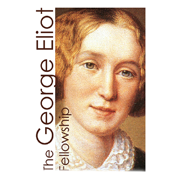Fellowship Archive
The George Eliot Fellowship

Annual Supper 1936
The Fellowship was started in late 1930 and an annual supper was started near the birthday of George Eliot the following year. By 1936 it was well established and usually a well-known figure was invited to make a speech and propose a toast to the immortal memory.
Well known in 1936 of course does not guarantee recognition 84 years later but the internet opens many doors for us. Some we do know about. Miss Grant was a well-regarded and very successful Head mistress of Nuneaton Girls’ High School. Mr A H Moore was active in the Fellowship before and after the war.
Major Desmond Chapman-Huston was born in Ireland and had a varied career from acting, writing plays and poetry to military service. In the inter-war years he edited several memoirs and diaries of aristocratic figures and wrote some historical biographies, mostly from his new home in Bavaria. One can only assume that the supper organisers knew of a liking he must have had for George Eliot.
Sir Archibald Flower might have been better known locally since he came from Stratford on Avon and was chairman of what we now know as the Shakespeare Birthplace Trust, and of the Shakespeare Memorial Theatre. A Cambridge graduate who took part in the Boat race in 1886, he was a County Councillor and served as Mayor of Stratford, becoming Sir Archibald in 1930.
Leon M Lion (b.1879) was a stage and film actor, playwright and theatrical director. He was well-known in his time and Rochester University has several boxes of his correspondence in its collection. One assumes that his parents had a sense of humour in choosing his first name, rather like those of Major Major in Catch 22.
So, quite a distinguished gathering for the supper on 23 November 1936. The Fellowship was clearly at pains to remind guests of the links between the venue and George Eliot, Oldinport being her name for the thinly disguised Newdigate family in Mr Gilfil’s Love Story.
The hotel was a distinguished looking building. It was built at the start of World war l to replace a building of the same name which Eliot certainly knew and references in Felix Holt.
The original also had an important part in Nuneaton’s administrative history. It stood only a few yards from where the statue of George Eliot is now placed. In the first, pre-1914 picture one can see the building remembered as the Midland Bank, later HSBC, now empty and sad but of good design.
The second picture shows the replacement Newdigate Arms and it was here that the guests assembled for their Anniversary Supper in 1936. Again, it was a fine building which was demolished, to local dismay, in the late 1960s.
A further area for research, still to be undertaken, is the selection of signatures on the back of the programme, which we acquired from a dealer who wrote asking whether we would be interested.
The one signature with any connection to George Eliot is that by Philip Winser. Working backwards, Philip’s parents were Alison and Rupert Winser. Rupert was at this time the rector of Allesley, a village on the outskirts of Coventry. His wife was Alison Evans who was the only child of Frederic and Charlotte Evans. Frederic had died in 1927 but he had been rector of Bedworth since 1876. He had played a key part in mounting the 1919 centenary exhibition in Coventry. Fred was the oldest son of Isaac Evans, an Oxford blue at cricket married to a member of the wealthy legal and watchmaking Rotherham family. Isaac of course, was Mary Ann’s elder brother.
Philip, the guest at the Supper, was the oldest of Alison’s four children. Both he and his brother were to be killed serving in the RAF during the Second World War.
{ALBUM album_id=11 album_limit=10 album_layout=default}

